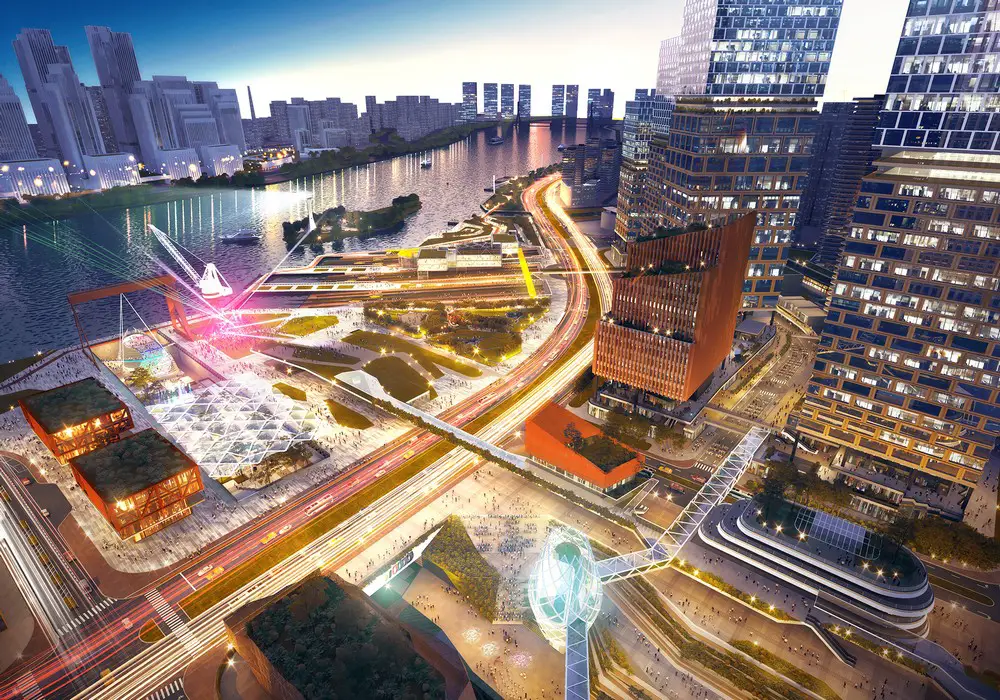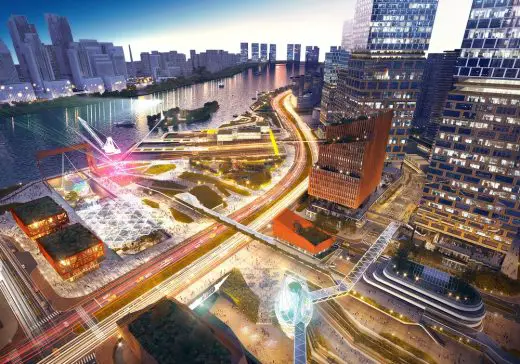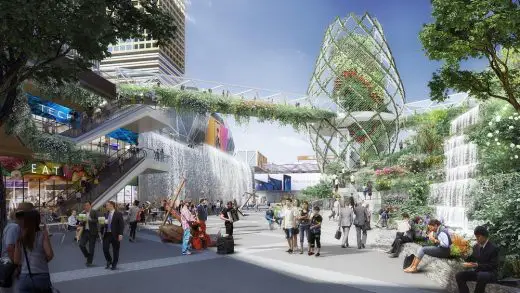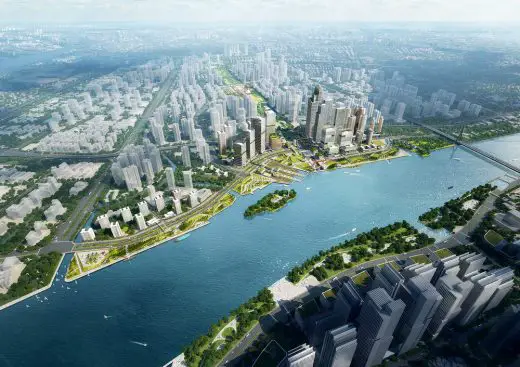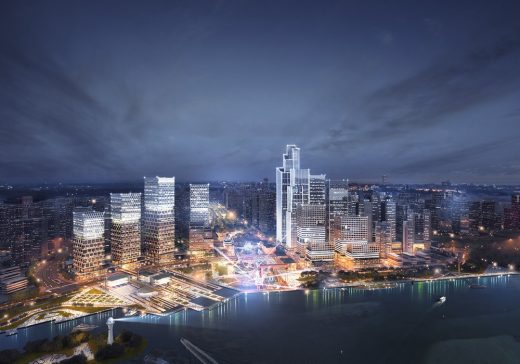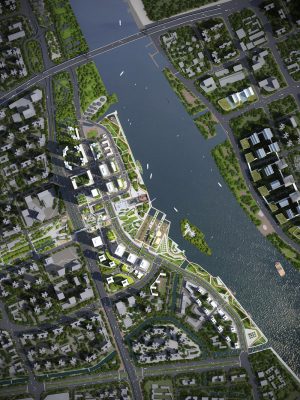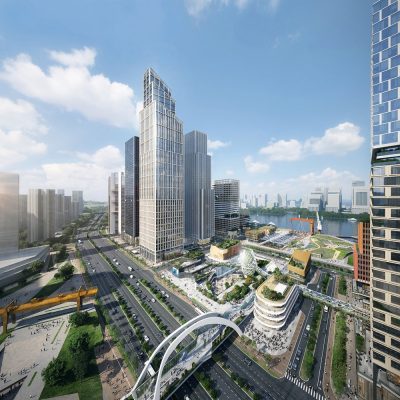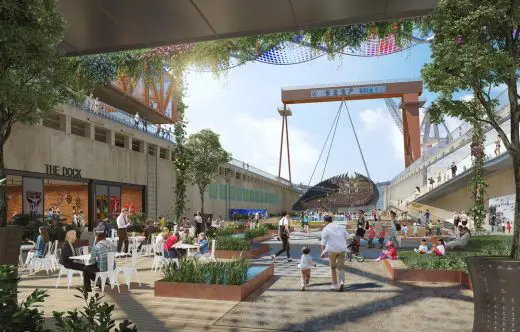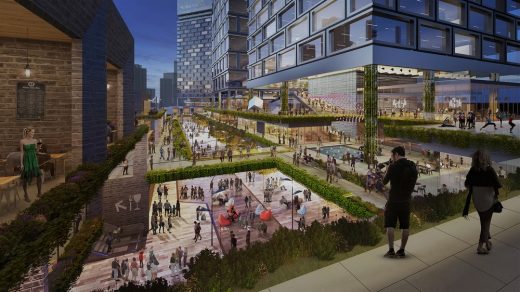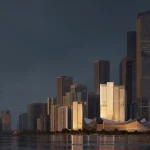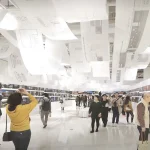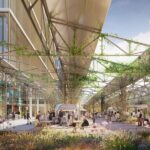Guangzhou Shipyard Masterplan Liwan District buildings, SPARK China news, Waterfront urban regeneration
Guangzhou Shipyard Master Plan
11 May 2020
Design: SPARK
SPARK completes Guangzhou Shipyard Master plan SPARK
PROJECT SUMMARY
Guangzhou Shipyard Master Plan Regeneration
SPARK has completed the master planning of Guangzhou Shipyard, a waterfront urban regeneration of the historic Guangzhou International Shipyard. The master plan has a total construction area of 1.2 million square metres including residential, culture, offices, retail, recreation, education and healthcare facilities.
SPARK initially won the international competition to develop the master plan in 2018 working for the renowned Chinese developer, CITIC Group.
Stephen Pimbley SPARK’s founding director commented “Designing at the scale of the Guangchuan is a complex undertaking. SPARK have above all worked to create an attractive and resilient environment that draws on the very special history of the shipyard. In this time of unprecedented social and environmental change SPARK’s approach attempts to anticipate the transformations that are set to shape our urban environment.
SPARK have focussed on the quality of the public space and its ability as a connector. I believe the quality of the developments public infrastructure and its ability to unite the master plan’s disparate zones and functions together is perhaps more important than the quality of the individual buildings that are destined to occupy the prescribed development plots”.
The Guangchuan shipyard played a key role in Guangzhou’s industrial history and is primed to perform a new role in the Chinese Government’s framework for the Guangzhou, Hong Kong and Macau Greater Bay Area with the ambition to create a people friendly world class waterfront. By 2030 it will be transformed into a “Future Harbour City”, a pioneering landmark and for the Greater Bay Area.
SPARK’s master plan is predicated on the blending of uses; residential with office, culture, education, commercial, restaurants, cafes and local commerce therefore attracting people and making the environment safe and friendly. The diversity of uses generates activity that contributes to the overall quality of the development. Planning public spaces in a way that encourages the coexistence and the permanence of people is a method of investing in sustainability environmentally and socially into the master plan.
In such a “city-scale” master plan high-density could negatively affect the quality of the public environment. SPARK has used positively the relatable scale historical elements to impart a positive effect on people’s perceptions of the overall environment.
Spark’s master plan is founded on the pragmatic principles of good connectivity, density and quality public spaces supported by a rich palette of activities. These will ensure the reimagined Guangzhou shipyard becomes a valued destination for working and living. The creation of a vibrant and valuable development for people to assimilate and come together as a society.
DESCRIPTION
Land use
Based on the approved city government master plan, Spark’s Future Harbour City is based on developing good quality public space and pedestrian networks through the notion of “One Centre, One Ring, Three Zones” an urban structure aimed at bonding the buildings with public space via pedestrian networks along the 2-kilometre site.
Master plan structure: “One Centre, One Ring, Three Zones”
“One Centre” refers to the “Future Valley”, sitting at the heart of the development and
connecting metro access with the development’s multi-level pedestrian network; “One Ring”, the Guangchuan Ring, draws visitors from the city centre to the Riverfront Heritage Park. It is the master plan’s primary pedestrian network. “One Centre” and “One Ring” connect the “Three Zones”: “Commercial Zone”, “Living Zone” and “Riverfront Heritage Zone”.
The benefit of this integrated and connected mixed-use development extends far beyond the notion of aesthetics. Spark’s master plan is founded on the pragmatic principles of good connectivity, density and quality public space supported by a rich palette of activities. These will ensure the reimagined Guangzhou shipyard becomes an international destination for commerce and entertainment and contemporary living.
“One Centre”: The Future Valley
The “Future Valley” connects the Guanggang Heritage Green Axis and the Guangchuan Riverfront Park, providing the city with a seamless green urban oasis of over 600,000sqm.
With direct access to metro lines, the well-connected “Future Valley” is an urban pedestrian hub and an eco-friendly “living room”.
The “Future Tower” located in the centre of the valley is a viewing tower, it is the heart of the multi-level pedestrian flow and the main converging point of the Guangchuan Ring.
“One Ring”: Guangchuan Ring
Three key pedestrian connections contribute to the success of the Guangchuan master plan: First, the central east-west connection, linking the Guanggang park with the metro interchange and the riverfront heritage zone. Second, the north-south connection which ties the commercial and residential zones together by the 3-dimensional network. Third, is the connection between the commercial zone and the riverfront heritage zone.
Respecting the approved city government urban plan, the Guangchuan Ring interprets the above three key connections as: elevated parks and walkways, activated road-crossing and pedestrian tunnels, and riverfront boardwalks.
Vertical pedestrian circulation nodes in the form of social stairs, elevators and escalators are strategically inserted to the network, making the Guangchuan Ring an effective 3dimensional pedestrian circulation system.
“Three Zones”: Commercial Zone, Living Zone, and Riverfront Heritage Zone
The master plan’s 700,000 sqm of commercial space is divided into North and South zones by the central east-west Future Valley axis.
“South Commercial Zone” consists of 5 plots. It features a 180m headquarter office tower and a creative office tower cluster, termed as “Creative and Tech Gateway”. Adjacent to the creative office towers, as part of the Guangchuan Ring, a multi-level commercial and leisure street zone provides a human scale convivial atmosphere.
“North Commercial Zone” consists of 6 plots. It features a 300m headquarter office tower, a 220m innovation centre, and a cluster of riverfront independent headquarters. The Northern Commercial Zone spans across Fangcui Road and Changdi Road. Its main commercial street features “high-end” retail shops and restaurants, it connects the business area to the riverfront park and the Northern Residential Area. The major commercial towers in the North Commercial Zone are connected the metro interchange via a basement pedestrian network.
The “Living Zone” delivers over 500,000 sqm of residential facilities. Via the Guangchuan Ring, each sub-zone is well-connected with metro stations, Commercial Zones and Riverfront Heritage Zone.
The“Riverfront Heritage Zone” features a waterfront park extending along the riparian corridor, a green and urban system punctuated by cultural buildings and nodes of activity aligned to the old slipways and dry dock. The waterfront is a key walkable link that connects the development zones to infrastructure, attractions and living and working zones.
The riverfront corridor is punctuated by a north south green axis that links an existing city heritage park with the river through the master plan area.
Two key heritage preservation proposals are the Slipway Future Forum and “Dry Dock Valley”. The Slipway Future Forum is a multi-function cluster of pavilions linked to the creative offices via a second-level bridge. The “Dry Dock Valley” is a child-friendly family destination. The preserved dry dock contains a heritage café, a green park, a kid’s zone and a unique viewing deck over the Pearl River.
Guangzhou Shipyard Master Plan Liwan District – Conclusion
Spark’s “One Centre, One Ring, Three Zones” structure allows the disparate high and medium density urban areas to be linked to the infrastructure nodes and points of amenity and activity.
The “Future Harbour City” is a mixed-use development of commercial offices, cultural attractions, residential facilities and a riverfront heritage park. It is destined to become a landmark for Guangzhou, and the Greater Bay Area.
Guangzhou Shipyard Master Plan – Building Information
PROJECT DATA
Total GFA (sqm): 1,254,000sqm (Retail: 677,000sqm, Residential: 525,000sqm, Public: 52,000sqm, Basement: 320,000sqm, Basement retail: 49,300sqm)
CREDITS
Project Name: Guangzhou Shipyard Master Plan Project
Location: Liwan District, Guangzhou
Client: Guangzhou Shipyard Industrial Limited
Design Architect: SPARK
Project Director: Stephen Pimbley + Wenhui Lim
Project Associate: Yun Wai Wing
Competition Phase team: Yao Jun, Luca Maccarinelli, Liliani Saputri, Mark Mancenido,Dan Li, Andriani Wira Atmadja, Michael Halagao, Jingren Tan, Cantona Ang Boon Kang, Brian Mah, Clarissa Lim Concept Phase Team: Yao Jun, Jason Ye, Javier Campoy, Liliani Saputri, Joei Wee, Regina Kartika, Qingcheng Guo, Andy Try, Wenwei Sim, Marshell, Jayne Lim
Design Period: 2018-
Height: 300m
SPARK is a Singapore, Shanghai and London based team of designers and thinkers working in the disciplines of architecture, urbanism, interior design, landscape design, research and branding.
Guangzhou Shipyard Master Plan Regeneration images / information from SPARK Architects
Location: Guangzhou, China
Architecture in Guangzhou
Guangzhou Architecture
Guangzhou Architecture Designs – chronological list
Poly 335 Financial Center Guangzhou
Design: Goettsch Partners
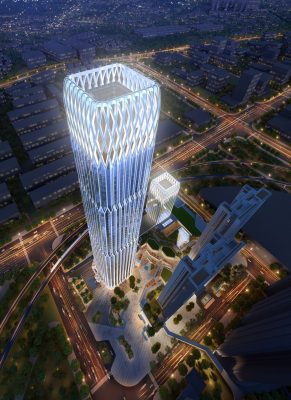
image courtesy of architects
Poly 335 Financial Center Guangzhou
Pazhou District Masterplan Guangzhou
Design: Goettsch Partners
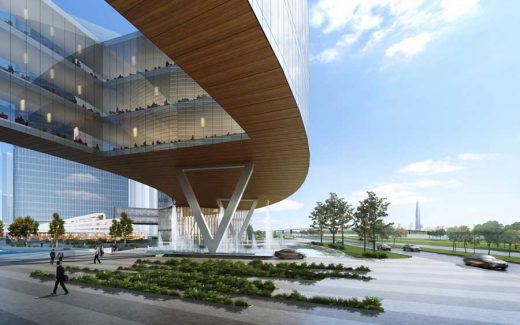
image courtesy of architects
Pazhou District Masterplan Guangzhou
Huabang International Centre, Pazhou
Architects: 10 DESIGN
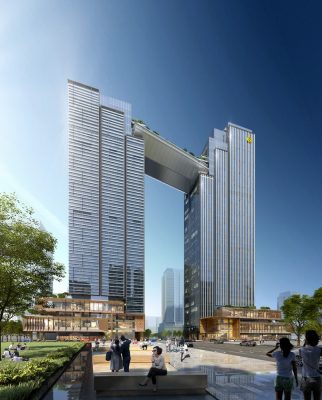
image courtesy of architects
Huabang International Centre Guangzhou Building
Parc Central
Design: Benoy with Ronald Lu and Partners
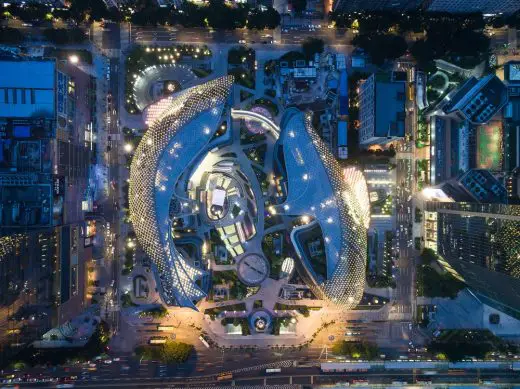
image Courtesy architecture office
Parc Central Guangzhou
Comments / photos for the Guangzhou Shipyard Master Plan Regeneration design by SPARK Architects China page welcome

